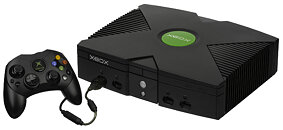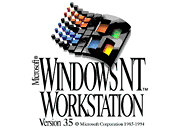Sun started discussing open sourcing Java all the way back in 2001, according to Phipps. From 2001 to 2003, it did some investigative work to find out how hard it was going to be.
"Once they decided to go for it, it took us a year to get the code in a state where it could be put under an open source license," Phipps said.
And that was Java, a programming language -- not an entire OS. Java is a project under current development at Sun, which created more than 95 percent of the source in house, and the project's leader, James Gosling, is still with the company.
In the case of OS/2, development ceased more than a decade ago, and a large amount of the code belongs to Microsoft, which is not known for releasing its code.
Even worse, it had been developed in IBM's Boca Raton facility, which closed in 1996. Today, no one knows where all the code actually is: The staff and everything held at Boca has been scattered to the wind, according to Moskowitz.
Assuming IBM even
had all the code in one place, it would have to go through all of it, line by line, and find out who wrote what -- an IBM staffer, a Microsoft programmer or a third party.
"Without having all the code, all the contracts and potentially all the access to people ... it's extraordinarily difficult for IBM to determine what is absolutely releaseable unfettered," Moskowitz said.
The code is such a mix of sources that he said he had no idea if something even remotely buildable could be cobbled together.
Moskowitz gave an example of how daunting a prospect assessing OS/2 could be: He had once been charged with clearing an application for release. Going through 100,000 lines of code cost $250,000 and took a team of eight nearly four months to track down all of the contracts and people involved.
Too often, the team would identify a staffer believed to have written a single line of code -- only to discover that they merely
rewrote the code, which had initially been authored by another staffer. Then, the task became chasing down the original coder. In some instances, four or five people ultimately may have been responsible for just one line of code.
And that was a simple app. OS/2, until version 3, was a complex, joint Microsoft/IBM development. Originally known as OS/2 NT, it was going to be Microsoft's high-end operating system until the two companies had their highly publicized split in 1990.
At that time, David Cutler, a programmer extraordinaire, defected from DEC to Microsoft and wrote what would be the kernel of Windows NT 3.1.
Prior to that, both companies had programmers working at each other's facilities. Unless every line of code in OS/2 is signed, people vetting the code today will have no way of knowing who wrote a particular bit of code, and when.
Sun has also released the Solaris operating system as an open source project, but was only able to do so because it bought an outright perpetual license in 1994 from Novell, which owned the Unix System V source on which Solaris was based.* In the case of Solaris, Phipps said Sun needed to do four years of due diligence to prepare it for release.
Phipps said such situations often prove just too expensive, because the effort requires nearly as many lawyers as programmers. And without a clear business case, the undertaking may simply prove unjustifiable.
"The investment in patent searches, code scrubbing and due diligence is huge," Phipps said. "It involves a great deal of engineering and a great deal of legal work."
"I can see IBM looking at that and deciding they don't have any money to waste on OS/2, which they won't make any money from anyway," he added.
source:
http://www.internetnews.com/dev-news/article.php/3725526








